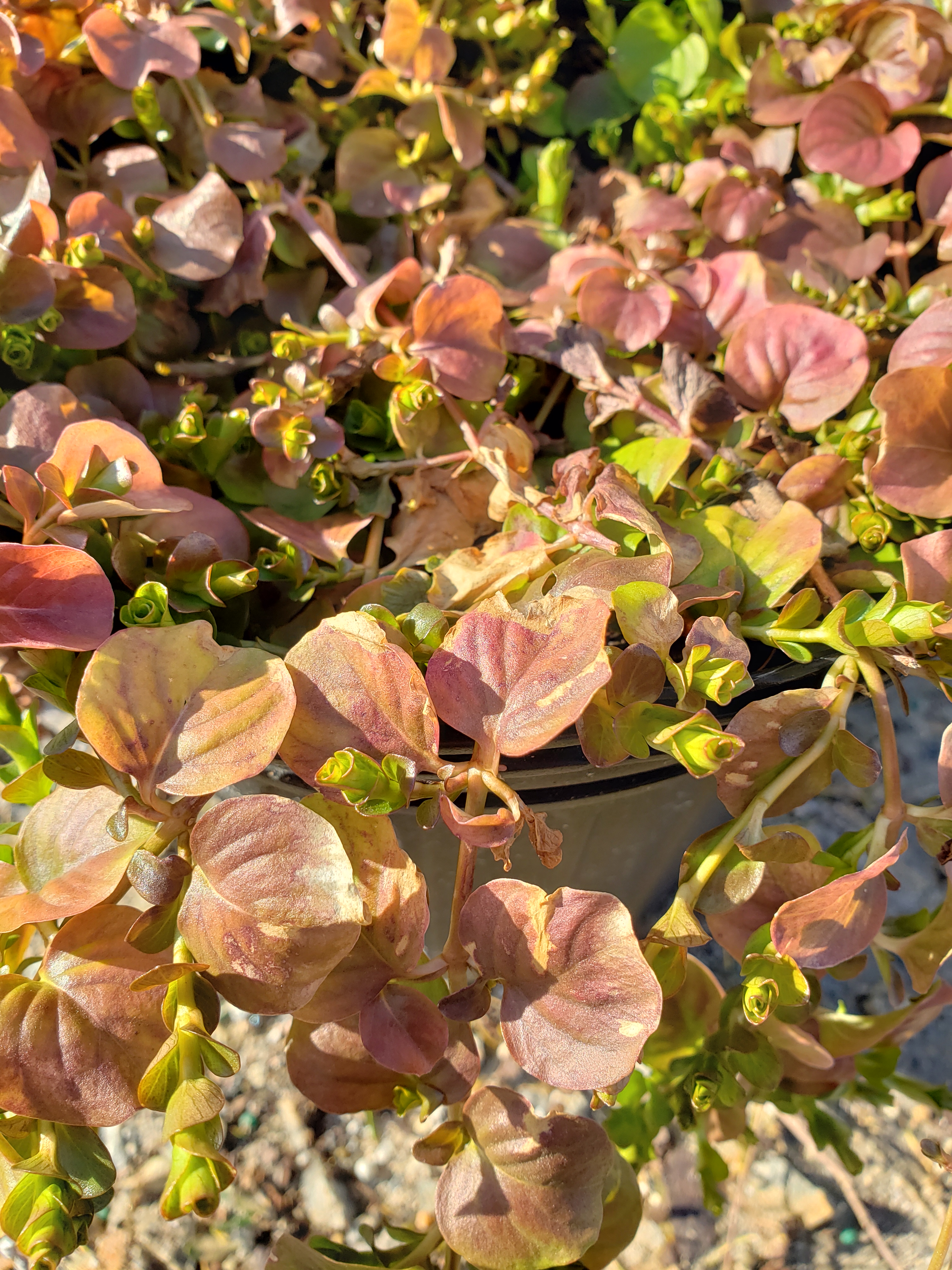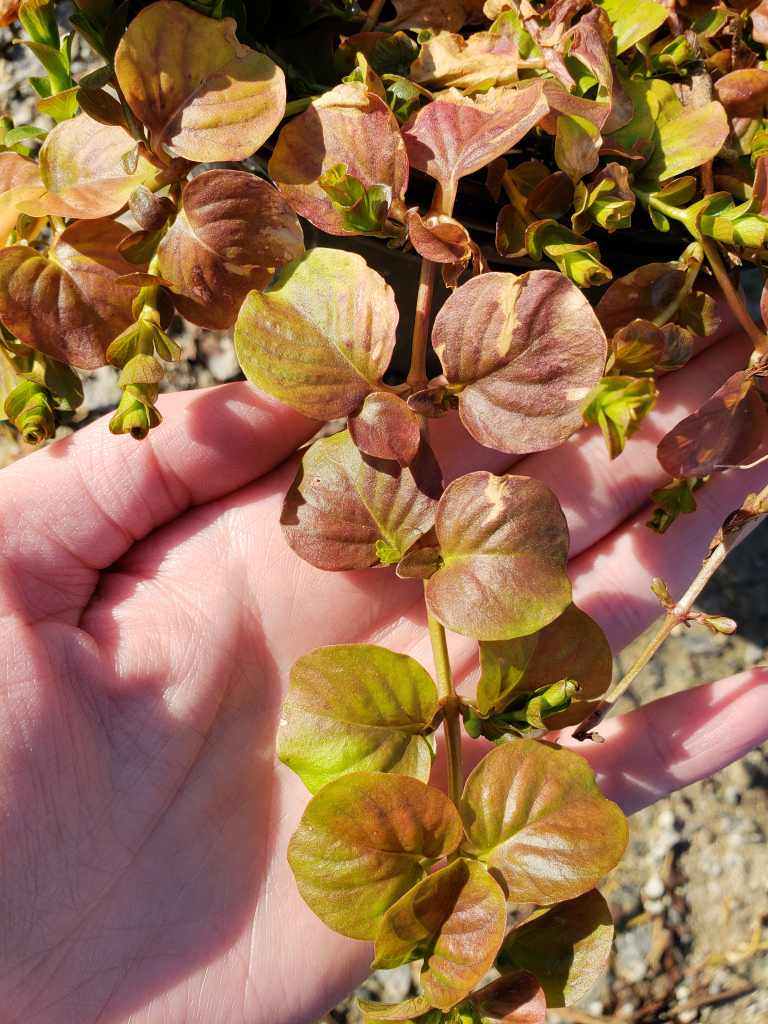This week, we're focusing on a vigorous little groundcover called creeping Jenny (Lysimachia nummularia). In our area, creeping Jenny is a part-shade perennial, which grows best in moist garden soils or containers. It should not be allowed to grow in areas where it could spread to natural habitats, as it can be a bit aggressive. It is ideal for planting around large stepping stones, as it can take some light foot traffic.
 Winter foliage of creeping Jenny, with lots of new shoots!
Winter foliage of creeping Jenny, with lots of new shoots!
For best success, you should avoid planting creeping Jenny in areas with direct afternoon sunlight, as this can cause wilting and blanching of leaves. While it requires constant moisture, the soil should be well-drained and not boggy. Wet soils will lead to root rot. Heavily damaged foliage may be cut back if needed in late winter or early spring before new shoots appear.
ID Tips
- Creeping Jenny is very easy to identify. The leaves are small, round, and arranged in flat, opposite pairs along creeping stems that stay low to the ground and will trail over walls or containers.
- The flowers are small, yellow, and bell-shaped. The flowers often fade into the background of the bright trailing foliage, which is most often a chartreuse color in gardens (though it also comes in a medium green color). The foliage may turn bronze in winter.
 Note the characteristic pairs of round leaves along the stems.
Note the characteristic pairs of round leaves along the stems.